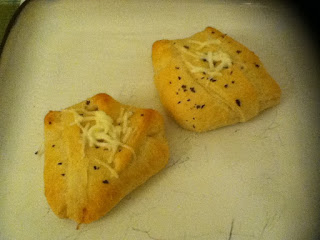Hi,
I am Arggkitten or Kitten for short. I am new at this but I have a lot of cool stuff to share. So here it goes! I grew up in southern Arizona, United States. I am happily marred 3 years this June. I am currently a junior at college working on my BS in Education. When I am done with school my goal is to have a 3rd grade classroom. I have three cats and one dog. My favorite questions are why and or how? My favorite things to do are learn, craft, sew, play video games, going to the dog park with Lilo,my dog, spending the day with family and friends, and watching & reading nonfiction science, history, fantasy, anime, and cartoons. I am planning on blogging at least once a week about my projects I create, lessons I make, recipes I create or really like, and occasional just fun stuff. I am also always open to ideas for any blog ideas.
I am currently working on creating quilted curtains to hang in my sewing room. The pattern I choose is called a tumbling block which kind of looks like a checker board in it's simplest form. When they are done they will be 4 inch squares. If you would like to make a similar set read below....
You will need
- a way to measure your fabric. I suggest a healing cutting mat, it has measurements printed on both sides and is used with a rotary cutter
- a pair of good scissors
- a rotary cutter, which blade you get depends on the type of fabric you buy (I found it's the easiest way to cut fabric straight)
- at least one fabric with pattern, If you want more than one pattern, a good idea is to look at fat quarters, these are a 1/4 of a yard and usually a fraction of the price
- one plain fabric or the closest to plain (when you look at it from a distance it looks like a solid)
- sewing pins
- masking tape

- Buying Fabric... You need to decide how big the future curtains will be. Normally when people make curtains they make them the width and a half of the window. So if you have a 4 foot window you need 6 feet of curtain. and of course the length, this part is more of a personal preference. Decide how big you want your squares to be when it is done. When you sew them you need to allow a 1/4 inch for hem line, any less then this you might develop a hole, more then this it is a waste of fabric.
- Go to a few different fabric stores, every fabric store has different fabrics. When you buy your fabric, you need to remember that fabric is sold by the yard. If you go to a small local shop they will be able to help you with the amount of fabric you need to complete your project, and if you ask they might help you with colors. Big stores don't normally do this. Do not worry if you come up short on fabric you can always get more.
- When you get home... When you get first thing you do is wash and dry your fabric. If you do not later when you wash it might not all shrink the the same and then it will look weird.
- Iron your fabric The flatter it is the less fabric you waste, and easier it is to sew. Fabric is expansive so try to waste as little as possible. You even want to save scraps, you can use them to make a scrap quilt, or pillow case. I'll most likely be making this next since I have so many scraps myself.
- Create blocks... Square off your fabric. This means to cut the frayed edges off.
- Cut your squares into the size you decided earlier remember to add the 1/4 inch for the hem. I have forgotten before and it wastes a lot of fabric if you do not catch yourself.
- Combine your fabrics, each block contains 4 squares. You want two of your constant solid fabric and two of the pattern fabric squares. Before you sew, if this is your first time, read you sewing machine manual, and NEVER wind your main knob backwards this will mess up your gears and eventually break something.
- Sew the squares. Each letter represents a fabric
- Sorting... Next sort the blocks into strips. How you sort is completely up to you. Have fun! It's kind of like doing a puzzle. This is the step I am at now.
- Creating into strips... Use the sewing pins to connect your blocks into strips, place labels on the bottom so you don't get the strips confused later.
 |
| Add caption |
- Sew strips together to create top. This would normally be a blanket so the top means the side you would want facing up when laying on the bed or in this case the room.
- Next I will go buy my batting, backing, and rings. My windows are single pane this will help keep the air temperature I want in the room.
I'm not quiet sure what I'm going to do after this as soon as I figure this portion out I will blog it as continued curtains. I am planning on blogging at least once a week.





















